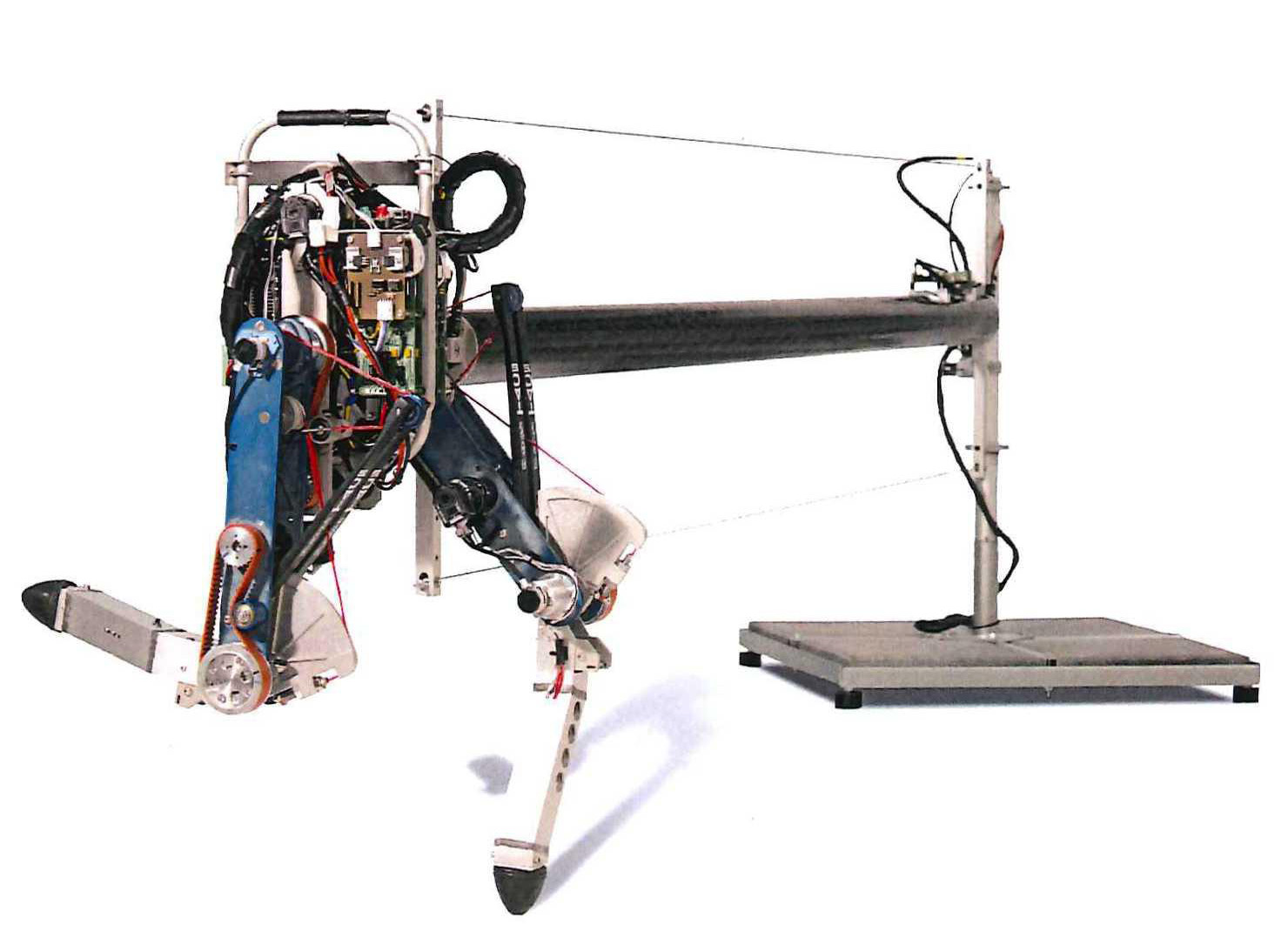The latest and possibly last walking robot from the Delft Biorobotics Lab hops around as a mechanical ballerina. It should help reveal how humans run, says the new Dr Daniel Karssen.
“Better understanding of how humans run is essential for the development of aiding devices such as prostheses,” says Karssen in his introduction. One of the big unknowns of prostheses is how such devices affect the ability of the runner to handle disturbances, like sudden pushes or bumps on the road.
In this context, the robot is a physical implementation of a mathematical simulation model. And a very limited version at that, since the robot is fixed to a pole to make sure that it cannot fall over. That said, seeing robot, named Phides, run immediately looks familiar. It even has a certain grace.
The distinction between walking and running is the short moment in between steps when no feet touch the ground. Researchers distinguish between stance (step) and flight. Karssens concentrated on three aspects of the robotic run: the leg stiffness, location of the centre of mass and swing-leg retraction rate.
The leg stiffness, it appeared, could have an important stabilizing effect on disturbances. Non-linear springs proved especially effective in disturbance rejection. The optimal (non-linear) spring exerts its maximal force at 80% of the compression. As the compression increases, the force goes down by two-thirds. Such special springs can reduce the effect of disturbances up to seven times better than normal springs can.
The optimal position of the centre of mass is not, as usually chosen, at the hip, says Karssen. The optimal place depends on the sort of disturbances. Bumps on the floor are best taken with the centre of gravity above the hip, whilst sideward pushes are best countered with low loads. Carry a crate of beer at the end of each arm, and no one will push you over.
Finally, the optimal swing-leg retraction rate is a bit of a trade-off, says Karssen. Disturbances are best countered with low speeds of backward rotation of the front leg prior to touchdown. The optimal retraction rate even decreases at higher running speeds. But there’s more involved such as energy efficiency, impact forces and the risk of slipping. Hence Karssen concludes that putting the front foot down is an inherent trade-off to consider in a (running) robot control system.
One of the practical consequences of this PhD-research is that the performance of exoskelets may be significantly improved by the application of non-linear springs, something that’s relatively easily to implement.
Phides is as yet the last in a series of walking robots that were developed in 3mE’s Delft Biorobotics Lab under the supervision of Dr. Martijn Wisse, Dr. Karssen’s co-supervisor. Walking robot research will be continued by the new Dr. Heike Vallery who, as it now seems, will focus on biomedical applications. Wisse will shift his attention to developing robot hand and arms, for which he received a Vidi grant.
–> Daniel Karssens, Robotic Bipedal Running, 18 January 2012. Thesis-supervisor Prof. Frans van der Helm. Project financially supported by STW.



Comments are closed.